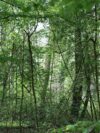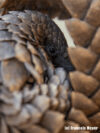African Lions
The African Lion
Due to its strength and impressive, lofty stature, the world’s second-largest cat is not nicknamed “King of the Beasts” for nothing. But due to habitat loss, poaching, and human-animal conflicts, the African lion is now considered an endangered species.
Lion – Profile
- Scientific name: Panthera leo
- Size: Male: approx. 1.70-2.50 m long, approx. 1.20 m shoulder height – Female: approx. 1.60-1.90 m long, approx. 1.10 m shoulder height
- Weight: Male: approx. 190-max. 260 kg – Female: approx. 130 kg
- Food: Small to larger mammals, birds, reptiles and fish (e.g. various antelope species, warthogs, ostriches, zebras, giraffes, buffaloes, but also elephants [mostly juveniles] )
- Number of offspring: 1-6 cubs per litter (average 3).
- Life expectancy:10-14 years, maximum 18 years
- Range: From the southern edge of the Sahara to South Africa.
- Habitat: Mostly open forests and bush and grassland areas with sufficient cover for hunting and rearing young.
- Population size: Approx. 9,600 to 30,000 individuals, numbers decreasing dramatically
- Main threats: Habitat loss, hunting of their prey, uncontrolled trophy hunting
- ICUN Red List Status: Endangered
Vulnerability status, threats, and protection
Lions are classified as Endangered on the IUCN Red List. Their threat situation depends on the region. While the protected areas in southern Africa are reasonably monitored and lions may still have stable populations in places, the populations in the western and partly in the eastern part of the continent have collapsed massively.
In many African countries, poaching and trophy hunting are responsible for the decline in lion populations. Habitat loss and hunting of prey are also proving to be critical problems.
Trophy hunting and illegal trade
Trophy hunting, to which many lions and other big cats fall victim every year, is permitted in several countries in Africa. Unsustainable and poorly controlled commercial lion hunting as part of international hunting tourism is one of the main causes of population collapse. The targeted shooting of capital males leads to a collapse of the reproduction rate in the respective prides. Additionally, new lions taking over prides after these shootings immediately kill all the cubs of the predecessors.
Human-wildlife conflict
The growing human population in the lion’s range is also leading to various forms of human-wildlife conflict. The hunting of antelope and other wildlife has led to a shortage of prey in some areas – which in turn drive lions to entering human settlements in search of food. Lions prey on livestock and domestic animals and are killed by humans in retaliation.
Contact with livestock can also lead to the transmission of diseases, which can cause severe population declines.
Last but not least, the poaching of bushmeat can result in lions becoming entangled in snares and traps set by poachers, resulting in their deaths.
Sources:
(1)Emmett, Meghan; Pattrick, Sean (2013): Game Ranger in Your Backpack. All-in-one interpretative guide to the Lowveld. Pretoria: Briza. S. 14-17
(3)https://www.nationalgeographic.com/animals/mammals/facts/african-lion



